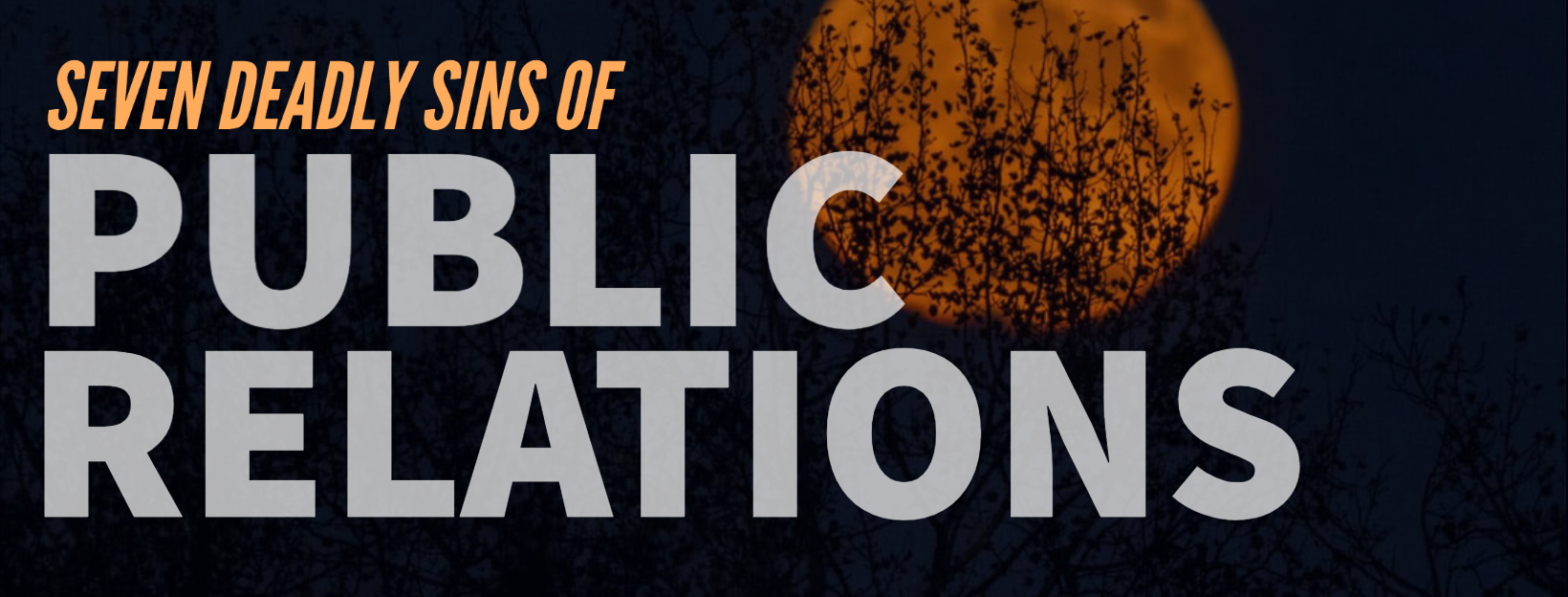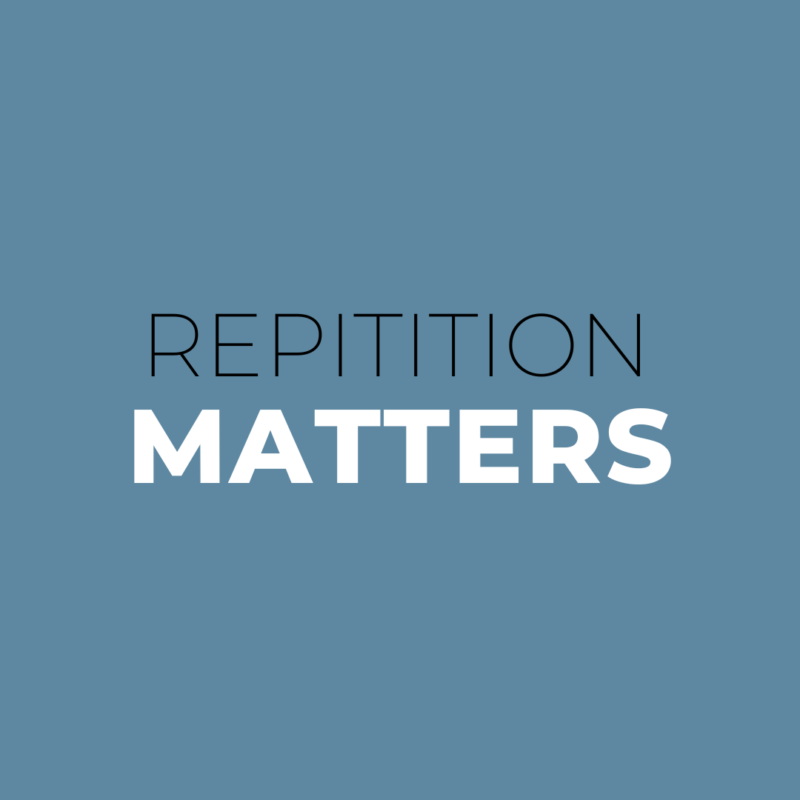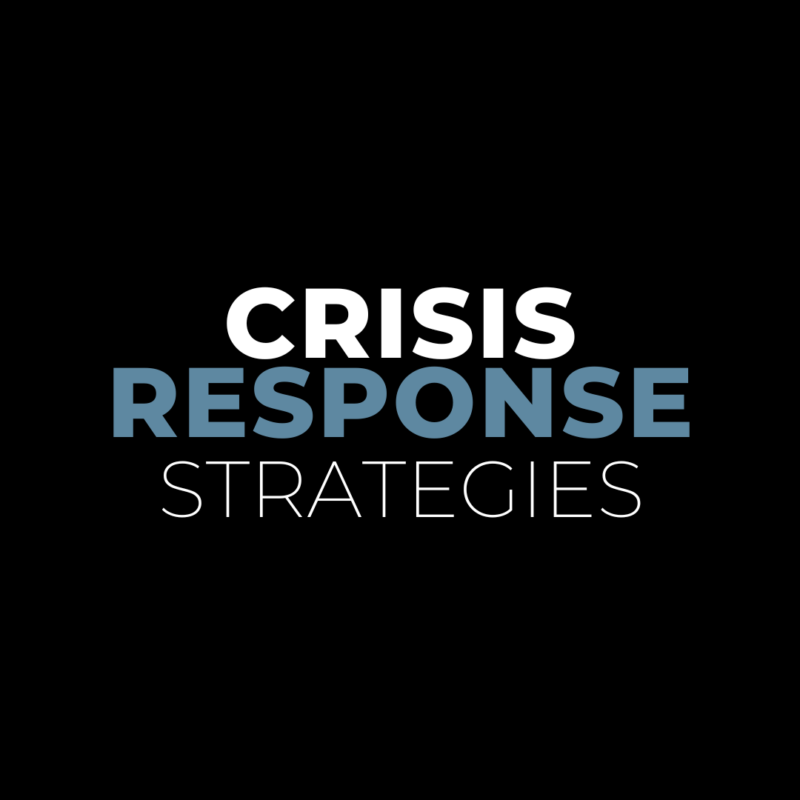Seven Deadly Sins of PR

Pride
“She is beauty. She is grace.” – Miss Congeniality
As PR pros, it’s our job to boast about our clients and to motivate others to want to do the same. The problem happens when organizations lack consideration for their audiences. We all know people who make everything all about themselves. When pride reveals itself in an individual, we distance ourselves from the individual. When pride reveals itself in a business, we tune out completely.
BEWARE the sin of pride in business communications by showing your audience you’re listening and doing your research to stay abreast of the things that matter to them.
Envy
“That should be me!” – Justin Bieber
When developing our clients’ communications strategy, it’s natural to draw inspiration from other successful organizations. While you don’t have to reinvent the wheel with every new client, it’s important to remember that each client is different and so are their stakeholders and communication needs. If you’re using the same ideas for every client, you’re not trying. Ensure your messaging is unique and tailored to fit each client.
BEWARE the sin of envy, and instead, try to use content that inspires you to create something fun and individualized for your clients.
Gluttony
“To the D, to the E, to the L-I-C-I-O-U-S” – Will.I.Am.
Sometimes, too much is not enough, and sometimes, too much is simply too much. For organizational communications, the best policy is to be strong, direct and to the point – and, no, that doesn’t mean dry, harsh and boring. Jazz up your writing by using strong adjectives, but try not to use too many buzzwords. These can be distracting and may take away the focus from your organization’s overall message.
BEWARE of the sin of gluttony in your strategies. “Trim the fat” in your writing by consolidating information, getting rid of overused buzzwords and highlighting important data.
Sloth
“Today, I don’t feel like doing anything.” – Bruno Mars
Despite what the bloggers say, life “hacks” are not always the best route to take – especially when it comes to client communication. Sure, sometimes we can get into a rut and fall into old habits, e.g., procrastination, rushing, miscommunication and more. At times, it can be a challenge to think like your audience and consider how your message will resonate, especially if you’re feeling burned out with your work. Ensure you’re keeping yourself on your toes and motivated by choosing different working habits.
BEWARE the sin of sloth, and eat the frog instead.
Lust
“Love me, love me, say that you love me.” – The Cardigans
Lust comes in many forms, whether it be the new app everyone is buzzing about, fancy new jargon or the latest communications tools. It’s easy to let shiny object syndrome get the best of us. Although new things can be enchanting, they can end up being more of a hindrance than a help. While there is always room to learn new things, familiarize yourself with new technology and beef up your vocabulary with more $2 words, it’s important to continue to balance your wants for client communication strategy with the needs of each individual campaign. The next time you feel yourself yearning for the latest and greatest strategy, ask yourself, “what’s in it for my audience?” or “will it help me better engage with my audience?”
BEWARE the sin of lust and remove those rose-colored glasses. By making decisions based on a clear, concise vision, you’ll be able to better engage with your audience.
Anger
“And I’m never gonna care about my bad reputation.” – Joan Jett
Can’t we all just get along?! While advertising agencies will tell you there’s something to be said about playing to the emotions of our audiences, it’s important to ensure that anger is not one of them. Anger tends to make people lose concentration and is not the way to motivate (a positive) action or conversation. It’s important to display your passion for issues and causes you care about, but passion without direction often leads to missed opportunities. You can establish a sense of urgency, without anger, while forging a path to move forward together.
BEWARE of anger coming out in your communication strategy. Focus more on conversation, engagement and attention ‒ the tools you can use for long-term progress.
Greed
“I. Want. More.” – Sharpay Evans
Of course, it’s perfectly OK for businesses to have a call to action. The problem here is less about the ask and more about the asker. If an organization is asking for monetary donations, they need to be transparent about what the funds will go toward. There is almost always an audience that will care and be willing to give, but shady organizations get shady suitors, and no one wants to support an organization that doesn’t support its stakeholders.
A greedy organization is not a trustworthy one. There’s also something to be said about promises made during an ask – businesses will be held accountable for the promises they make.
BEWARE of the green-eyed monster, greed. Once you put an ask out there, it’s out there, and someone will not forget about it. Make sure that you do what you say you’re going to do, when you say you’re going to do it and exactly how you said you would do it.
___


